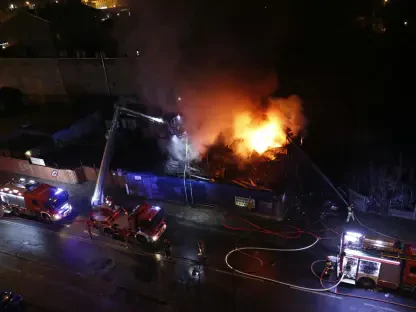In the heart of the nation’s capital, a silent crisis unfolds on the streets every day, where crash victims face not only physical and emotional trauma but also financial devastation due to outdated auto insurance laws. Despite years of advocacy and mounting evidence of the need for change, the District of Columbia’s minimum insurance coverage remains stuck at a figure set nearly four decades ago. This stagnation leaves many unable to recover from the staggering costs of medical bills and lost wages after accidents. With traffic fatalities and severe injuries continuing to impact families, the urgency for reform has never been clearer. The D.C. Council has yet to act on proposed legislation that could bring relief to countless residents, raising questions about why progress remains stalled in the face of such a pressing issue.
Persistent Challenges on D.C. Roads
The Grim Reality of Traffic Casualties
The streets of D.C. remain a dangerous place for pedestrians, cyclists, and drivers alike, despite initiatives like Mayor Muriel Bowser’s Vision Zero plan aimed at eliminating traffic deaths. While recent data shows a decline in fatalities compared to last year’s tragic peak of 52—the highest in decades—serious injuries have surged, particularly among pedestrians. Victims often suffer life-altering conditions such as broken bones, spinal damage, and traumatic brain injuries. These injuries lead to long-term medical care and rehabilitation, costs that far exceed the current minimum insurance coverage of $25,000, a limit unchanged since 1986. Adjusted for inflation, this amount would be closer to $75,000 today, and when factoring in the rapid rise of healthcare costs, it should approach $200,000. Without updated protections, many victims are left grappling with bills they cannot pay, pushing them toward financial ruin while the system fails to adapt to modern economic realities.
Economic and Social Fallout of Inadequate Coverage
Beyond the personal toll, the economic burden of crashes in D.C. is staggering, with annual costs exceeding $830 million. Insurance currently covers only about half of this amount, leaving the remainder to be shouldered by victims’ families, taxpayers, and local hospitals. This gap disproportionately affects residents in Wards 7 and 8, predominantly Black and lower-income communities, where crash rates are higher and financial resources scarcer. The outdated minimums exacerbate existing inequities, as those least able to absorb unexpected expenses are often hit hardest. This situation transforms a traffic safety issue into a matter of social justice, highlighting the need for legislative action to ensure fairer outcomes. The D.C. Council’s delay in addressing these disparities not only perpetuates hardship but also undermines trust in the system’s ability to protect its most vulnerable citizens from the devastating aftermath of road accidents.
Pathways to Reform and Resistance
Legislative Inertia and Proposed Solutions
Efforts to modernize D.C.’s auto insurance laws have gained traction with the introduction of the Motor Vehicle Insurance Modernization Act (B26-0057), yet the D.C. Council has not moved forward with meaningful action. This bill seeks to raise the minimum coverage to better reflect today’s costs, a step already taken by neighboring jurisdictions like Virginia, which updated its minimum to $50,000 per person last year. Industry representatives, including voices from the D.C. Insurance Federation, have acknowledged during public hearings that current limits are obsolete. However, concerns about potential premium increases have slowed progress, despite evidence from the National Association of Insurance Commissioners showing that states raising minimums often see slower premium growth compared to the national average. The lack of legislative urgency continues to leave victims unprotected, even as the data and public support for reform grow stronger with each passing day.
Countering Industry Concerns with Data
Skepticism from insurance providers about updating minimums often centers on the fear of higher premiums for consumers, but this argument does not hold up under scrutiny. Data reveals that premiums in D.C. have already risen by 35% since early 2022, while coverage levels remain stagnant, suggesting that insurers are benefiting without delivering proportional value to policyholders. Comparative analysis from states that have modernized their laws indicates that updated minimums can be implemented without significant cost spikes for drivers. This evidence challenges the narrative of inevitable financial burden and underscores the feasibility of reform. Moreover, ensuring adequate coverage aligns with the principle of equity, as it guarantees that victims receive meaningful support for the premiums they pay. The focus must shift from protecting industry interests to safeguarding residents who bear the real cost of accidents on D.C.’s roads.
Looking Ahead: A Call for Action
Building Momentum for Change
Reflecting on past delays, it has become evident that the D.C. Council had multiple opportunities to address the glaring inadequacies in auto insurance minimums but repeatedly fell short of decisive action. The persistent gap between rising costs and static coverage has left countless crash victims in a precarious position, struggling to rebuild their lives with insufficient resources. Public hearings and testimonies from affected families paint a vivid picture of hardship, yet legislative progress remains elusive. The drop in traffic fatalities offers a glimmer of hope, but the simultaneous rise in severe injuries reminds everyone that the crisis is far from resolved. Each missed chance to pass bills like B26-0057 represents a failure to prioritize the well-being of D.C. residents over industry hesitations, cementing a legacy of inaction that has deepened the financial and emotional toll on the community.
Steps Toward a Fairer Future
Moving forward, the path to meaningful reform demands immediate attention to pending legislation that can update insurance minimums to match current economic realities. The D.C. Council must prioritize scheduling votes on critical bills and engage with stakeholders to dispel myths about premium hikes, using robust data to guide decisions. Community advocacy can play a pivotal role by amplifying the voices of victims and highlighting the disproportionate impact on marginalized areas. Additionally, collaboration with neighboring regions that have successfully implemented higher minimums could provide a blueprint for balancing consumer protection with industry concerns. The time has come to transform years of discussion into tangible policy changes, ensuring that no crash victim is left to bear the burden of outdated laws. Swift action will not only address the financial inequities but also rebuild trust in a system meant to serve and protect all residents of the District.









